Description
Increase chance of death in elderly patient with dementia-related psychosis.
PHARMACEUTICAL FORM
Film-coated tablets.
CLINICAL PARTICULARS
Therapeutic indications
Risperidone is indicated for the treatment of schizophrenia.
Risperidone is indicated for the treatment of moderate to severe manic episodes associated with bipolar disorders.
Risperidone is indicated for the short-term treatment (up to 6 weeks) of persistent aggression in patients with moderate to severe Alzheimer’s dementia unresponsive to non-pharmacological approaches and when there is a risk of harm to self or others.
Risperidone is indicated for the short-term symptomatic treatment (up to 6 weeks) of persistent aggression in conduct disorder in children from the age of 5 years and adolescents with subaverage intellectual functioning or mental retardation diagnosed according to DSM-IV criteria, in whom the severity of aggressive or other disruptive behaviours require pharmacologic treatment. Pharmacological treatment should be an integral part of a more comprehensive treatment programme, including psychosocial and educational intervention. It is recommended that risperidone be prescribed by a specialist in child neurology and child and adolescent psychiatry or physicians well familiar with the treatment of conduct disorder of children and adolescents.
Posology and method of administration
Risperidone is given as tablets.
Switching from other antipsychotics
When medically appropriate, gradual discontinuation of the previous treatment while Risperidone therapy is initiated is recommended. Also if medically appropriate, when switching patients from depot antipsychotics, initiate Risperidone therapy in place of the next scheduled injection. The need for continuing existing anti-parkinson medications should be re-evaluated periodically.
Adults
Risperidone may be given once daily or twice daily.
Patients should be titrated to 6 mg gradually over three days. Acute or chronic patients, should start with 2 mg/day Risperidone. The dosage should be increased to 4 mg on the second day and 6 mg on the third day. From then on the dosage can be maintained unchanged, or further individualized, if needed. The usual optimal dosage is 4 to 8 mg/day. However, some patients may benefit from lower doses.
A slower titration phase may be medically appropriate.
Doses above 10 mg/day have not been shown to be superior in efficacy to lower doses and may cause extrapyramidal symptoms. Since the safety of doses above 16 mg/day has not been evaluated, doses above this level should not be used.
A benzodiazepine may be added to Risperidone when additional sedation is required.
Elderly
A starting dose of 0.5 mg b.i.d. is recommended. This dosage can be individually adjusted with 0.5 mg b.i.d. increments to 1 to 2 mg b.i.d. Risperidone is well tolerated by the elderly.
Children
Experience is lacking in children aged less than 15 years.
Renal and liver disease
A starting dose of 0.5 mg b.i.d. is recommended. This dosage can be individually adjusted with 0.5 mg b.i.d. increments to 1 to 2 mg b.i.d. Risperidone should be used with caution in this group of patients until further experience is gained.
Contra-indications
Risperidone is contraindicated in patients with a known hypersensitivity to the product.
Warnings and Precautions
Intraoperative Floppy Iris Syndrome (IFIS) has been observed during cataract surgery in patients treated with medicines with alpha 1 adrengergic antagonist effect, including Risperidone.
IFIS may increase the risk of eye complications during and after the operation. Current or past use of medicines with alpha 1 adrenergic antagonist effect should be made known to the ophthalmic surgeon in advance of surgery. The potential benefit of stopping alpha1 blocking therapy prior to cataract surgery has been established and must be weighed against the risk of stopping the antipsychotic therapy.
Elderly patients with dementia
Overall mortality
Elderly patients with dementia treated with atypical antipsychotics have an increased mortality.
Concomitant use with furosemide
Caution should be exercised and the risks and benefits of this combination or co-treatment with other potent diuretics should be considered prior to the decision to use. There was no increased incidence of mortality among patients taking other diuretics as concomitant treatment with risperidone. Irrespective of treatment, dehydration was an overall risk factor for mortality and should therefore be carefully avoided in elderly patients with dementia.
Cerebrovascular Adverse Events (CVAE)
Risperidone should be used with caution in patients with risk factors for stroke.
The risk of CVAEs was significantly higher in patients with mixed or vascular type of dementia when compared to Alzheimer’s dementia. Therefore, patients with other types of dementias than Alzheimer’s should not be treated with risperidone.
Physicians are advised to assess the risks and benefits of the use of Risperidone in elderly patients with dementia, taking into account risk predictors for stroke in the individual patient. Patients/caregivers should be cautioned to immediately report signs and symptoms of potential CVAEs such as sudden weakness or numbness in the face, arms or legs, and speech or vision problems. All treatment options should be considered without delay, including discontinuation of risperidone.
Risperidone should only be used short term for persistent aggression in patients with moderate to severe Alzheimer’s dementia to supplement non-pharmacological approaches which have had limited or no efficacy and when there is potential risk of harm to self or others.
Patients should be reassessed regularly, and the need for continuing treatment reassessed.
Orthostatic hypotension
Due to the alpha-blocking activity of risperidone, (orthostatic) hypotension can occur, especially during the initial dose-titration period. Risperidone should be used with caution in patients with known cardiovascular disease (e.g., heart failure, myocardial infarction, conduction abnormalities, dehydration, hypovolemia, or cerebrovascular disease), and the dosage should be gradually titrated as recommended. A dose reduction should be considered if hypotension occurs.
Tardive dyskinesia/extrapyramidal symptoms (TD/EPS)
Medicines with dopamine receptor antagonistic properties have been associated with the induction of tardive dyskinesia characterised by rhythmical involuntary movements, predominantly of the tongue and/or face. The onset of extrapyramidal symptoms is a risk factor for tardive dyskinesia. If signs and symptoms of tardive dyskinesia appear, the discontinuation of all antipsychotics should be considered.
Neuroleptic malignant syndrome (NMS)
Neuroleptic Malignant Syndrome, characterised by hyperthermia, muscle rigidity, autonomic instability, altered consciousness and elevated serum creatine phosphokinase levels has been reported to occur with antipsychotics. Additional signs may include myoglobinuria (rhabdomyolysis) and acute renal failure. In this event, all antipsychotics, including Risperidone, should be discontinued.
Parkinson’s disease and dementia with Lewy bodies
Physicians should weigh the risks versus the benefits when prescribing antipsychotics, including
Risperidone, to patients with Parkinson’s Disease or Dementia with Lewy Bodies (DLB). Parkinson’s Disease may worsen with risperidone. Both groups may be at increased risk of Neuroleptic Malignant Syndrome as well as having an increased sensitivity to antipsychotic medicinal products; these patients were excluded from clinical trials. Manifestation of this increased sensitivity can include confusion, obtundation, postural instability with frequent falls, in addition to extrapyramidal symptoms.
Hyperglycemia
Hyperglycemia or exacerbation of pre-existing diabetes has been reported in very rare cases during treatment with Risperidone. Appropriate clinical monitoring is advisable in diabetic patients and in patients with risk factors for the development of diabetes mellitus. In some cases associated with ketoacidosis or hyperosmolar coma or death.
Hyperprolactinaemia
Risperidone should be used with caution in patients with pre-existing hyperprolactinaemia and in patients with possible prolactin-dependent tumours.
QT prolongation
As with other antipsychotics, caution should be exercised when risperidone is prescribed in patients with known cardiovascular disease, family history of QT prolongation, bradycardia, or electrolyte disturbances (hypokalaemia, hypomagnesaemia), as it may increase the risk of arrhythmogenic effects, and in concomitant use with medicines known to prolong the QT interval.
Seizures
Risperidone should be used cautiously in patients with a history of seizures or other conditions that potentially lower the seizure threshold.
Priapism
Priapism may occur with Risperidone treatment due to its alpha-adrenergic blocking effects.
Body temperature regulation
Disruption of the body’s ability to reduce core body temperature has been attributed to antipsychotic medicines. Appropriate care is advised when prescribing Risperidone to patients who will be experiencing conditions which may contribute to an elevation in core body temperature, e.g., exercising strenuously, exposure to extreme heat, receiving concomitant treatment with anticholinergic activity, or being subject to dehydration.
Venous thromboembolism (VTE)
Cases of venous thromboembolism (VTE) have been reported with antipsychotic drugs. Since patients treated with antipsychotics often present with acquired risk factors for VTE, all possible risk factors for VTE should be identified before and during treatment with Risperidone and preventive measures undertaken.
Children and adolescents
Before risperidone is prescribed to a child or adolescent with conduct disorder they should be fully assessed for physical and social causes of the aggressive behaviour such as pain or inappropriate environmental demands.
The sedative effect of risperidone should be closely monitored in this population because of possible consequences on learning ability. A change in the time of administration of risperidone could improve the impact of the sedation on attention faculties of children and adolescents.
Risperidone was associated with mean increases in body weight and body mass index (BMI). The effect of long-term risperidone treatment on sexual maturation and height have not been adequately studied.
Because of the potential effects of prolonged hyperprolactinemia on growth and sexual maturation in children and adolescents, regular clinical evaluation of endocrinological status should be considered, including measurements of height, weight, sexual maturation, monitoring of menstrual functioning, and other potential prolactin-related effects.
During treatment with risperidone regular examination for extrapyramidal symptoms and other movement disorders should also be conducted.
This medicinal product contains lactose monohydrate, patients with rare hereditary problems of galactose intolerance, the Lapp lactase deficiency or glucose- galactose malabsorption should not take this medicine.
Interaction with other medicaments and other forms of interaction
The risk of using Risperidone in combination with other drugs have not been systemically evaluated. Given the primary CNS effects of Risperidone it should be used with caution in combination with other centrally acting drugs.
Risperidone may antagonize the effect of levodopa and other dopamine-agonists.
Carbamazepine has been shown to decrease the plasma levels of the active antipsychotic fraction of Risperidone. Similar effects may be observed with other hepatic enzyme inducers. On discontinuation of carbamazepine or other hepatic enzyme inducers the dosage of Risperidone should be re-evalutated and – if necessary – decreased. Phenothiazines, tricyclic antidepressants and some beta-blockers may increase the plasma concentrations of risperidone but not those of the antipsychotic fraction. Fluoxetine may increase the plasma concentration of risperidone but less so of the antipsychotic fraction. When Risperidone is taken together with other highly protein-bound drugs, there is no clinically relevant displacement of either drug from the plasma proteins.
Clinically significant hypotension has been observed postmarketing with concomitant use of risperidone and antihypertensive treatment.
Verapamil, an inhibitor of CYP 3A4 and P-gp, increases the plasma concentration of risperidone.
Cimetidine and ranitidine increase the bioavailability of risperidone, but only marginally that of the active antipsychotic fraction.
Concomitant use of oral RISPERDAL with paliperidone is not recommended as paliperidone is the active metabolite of risperidone and the combination of the two may lead to additive active antipsychotic fraction exposure.
Pregnancy and lactation
The safety of Risperidone for use during human pregnancy has not been established. Although, in experimental animals, risperidone did not show direct reproductive toxicity, some indirect, prolactin- and CNS¬mediated effects were observed. No teratogenic effect of risperidone was noted in any study. Therefore, Risperidone should only be used during pregnancy if the benefits outweigh the risks.
In animal studies, risperidone and 9-hydroxy-risperidone are excreted in the milk. It has been demonstrated that risperidone and 9-hydroxy-risperidone are also excreted in human breast milk. Therefore, women receiving Risperidone should not breast feed.
Neonates exposed to anti-psychotic drugs during the third trimester of pregnancy are at risk for extrapryamidal and /or withdrawal symptoms following delivery. There have been reports of agitations, hypertonia, hypotonia, tremor, somnolenece, respiratory distress and feeding disorders in these neonates. These complications have varied in severity; while in some cases symptoms have been self-limited; in other cases neonates have required intensive care unit support and prolonge hospitalization
These products should be used during pregnancy only if the potential benefit justifies the potential risk to the fetus.
Effects on ability to drive and use machines
Risperidone may interfere with activities requiring mental alertness. Therefore, patients should be advised not to drive or operate machinery until their individual susceptibility is known.
Adverse reactions
The most frequently reported adverse drug reactions (ADRs) (incidence 10%) are: Parkinsonism, headache, and insomnia.
Investigations
Common Blood prolactin increaseda, Weight increased
Uncommon Electrocardiogram QT prolonged, Electrocardiogram abnormal, Blood glucose increased, Transaminases increased, White blood cell count decreased Body temperature increased, Eosinophil count increased, Haemoglobin decreased, Blood creatine phosphokinase increased
Rare Body temperature decreased
Cardiac disorders
Common Tachycardia
Uncommon Atrioventricular block, Bundle branch block, Atrial fibrillation, Sinus bradycardia, Palpitations
Blood and lymphatic system disorders
Uncommon Anaemia, Thrombocytopenia
Rare Granulocytopenia
Not known Agranulocytosis, Cases of venous thromboembolism, including cases of pulmonary embolism and cases of deep vein thrombosis have been reported with antipsychotic drugs
Nervous system disorders
Very common Parkinsonismb, Headache
Common Akathisiab, Dizziness, Tremorb, Dystoniab, Somnolence, Sedation, Lethargy, Dyskinesiab
Uncommon Unresponsive to stimuli, Loss of consciousness, Syncope, Depressed level of consciousness, Cerebrovascular accident, Transient ischaemic attack, Dysarthria, Disturbance in attention, Hypersomnia, Dizziness postural, Balance disorder, Tardive dyskinesia, Speech disorder, Coordination abnormal, Hypoaesthesia
Rare Neuroleptic malignant syndrome, Diabetic coma, Cerebrovascular disorder, Cerebral ischaemia, Movement disorder
Eye disorders
Common Vision blurred
Uncommon Conjunctivitis, Ocular hyperaemia, Eye discharge, Eye swelling, Dry eye, Lacrimation increased, Photophobia
Rare Visual acuity reduced, Eye rolling, Glaucoma
Ear and labyrinth disorders
Uncommon Ear pain, Tinnitus
Respiratory, thoracic and mediastinal disorders
Common Dyspnoea, Epistaxis, Cough, Nasal congestion, Pharyngolaryngeal pain
Uncommon Wheezing, Pneumonia aspiration, Pulmonary congestion, Respiratory disorder, Rales, Respiratory tract congestion, Dysphonia
Rare Sleep apnea syndrome, Hyperventilation
Gastrointestinal disorders
Common Vomiting, Diarrhoea, Constipation, Nausea, Abdominal pain, Dyspepsia, Dry mouth, Stomach discomfort
Uncommon Dysphagia, Gastritis, Faecal incontinence, Faecaloma
Rare Intestinal obstruction, Pancreatitis, Lip swelling, Cheilitis
Renal and urinary disorders
Common Enuresis
Uncommon Dysuria, Urinary incontinence, Pollakiuria
Skin and subcutaneous tissue disorders
Common Rash, Erythema
Uncommon Angioedema, Skin lesion, Skin disorder, Pruritus, Acne, Skin discolouration, Alopecia, Seborrhoeic dermatitis, Dry skin, Hyperkeratosis
Rare Dandruff
Musculoskeletal and connective tissue disorders
Common Arthralgia, Back pain, Pain in extremity
Uncommon Muscular weakness, Myalgia, Neck pain, Joint swelling, Posture abnormal, Joint stiffness, Musculoskeletal chest pain
Rare Rhabdomyolysis
Endocrine disorders
Rare Inappropriate antidiuretic hormone secretion
Metabolism and nutrition disorders
Common Increased appetite, Decreased appetite
Uncommon Anorexia, Polydipsia
Very rare Diabetic ketoacidosis
Not known Water intoxication
Infections and infestations
Common Pneumonia, Influenza, Bronchitis, Upper respiratory tract infection, Urinary tract infection
Uncommon Sinusitis, Viral infection, Ear infection, Tonsillitis, Cellulitis, Otitis media, Eye infection, Localised infection, Acarodermatitis, Respiratory tract infection, Cystitis, Onychomycosis
Rare Otitis media chronic
Vascular disorders
Uncommon Hypotension, Orthostatic hypotension, Flushing
General disorders and administration site conditions
Common Pyrexia, Fatigue, Peripheral oedema, Asthenia, Chest pain
Uncommon Face oedema, Gait disturbance, Feeling abnormal, Sluggishness, Influenza like illness, Thirst, Chest discomfort, Chills
Rare Generalised oedema, Hypothermia, Drug withdrawal syndrome, Peripheral coldness
Immune system disorders
Uncommon Hypersensitivity
Rare Drug hypersensitivity
Not known Anaphylactic reaction
Hepatobiliary disorders
Rare Jaundice
Reproductive system and breast disorders
Uncommon Amenorrhoea, Sexual dysfunction, Erectile dysfunction, Ejaculation disorder, Galactorrhoea, Gynaecomastia, Menstrual disorder, Vaginal discharge,
Not known Priapism
Psychiatric disorders
Very common Insomnia
Common Anxiety, Agitation, Sleep disorder
Uncommon Confusional state, Mania, Libido decreased, Listless, Nervousness
Rare Anorgasmia, Blunted affect
a Hyperprolactinemia can in some cases lead to gynaecomastia, menstrual disturbances, amenorrhoea, galactorrhea.
b Extrapyramidal disorder may occur: Parkinsonism (salivary hypersecretion, musculoskeletal stiffness, parkinsonism, drooling, cogwheel rigidity, bradykinesia, hypokinesia, masked facies, muscle tightness, akinesia, nuchal rigidity, muscle rigidity, parkinsonian gait, and glabellar reflex abnormal),akathisia ( akathisia, restlessness, hyperkinesia, and restless leg syndrome), tremor, dyskinesia (dyskinesia, muscle twitching, choreoathetosis, athetosis, and myoclonus), dystonia. Dystonia includes dystonia, muscle spasms, hypertonia, torticollis, muscle contractions involuntary, muscle contracture, blepharospasm, oculogyration, tongue paralysis, facial spasm, laryngospasm, myotonia, opisthotonus, oropharyngeal spasm, pleurothotonus, tongue spasm, and trismus. Tremor includes tremor and parkinsonian rest tremor. It should be noted that a broader spectrum of symptoms are included, that do not necessarily have an extrapyramidal origin.
Overdose
Symptoms
In general, reported signs and symptoms have been those resulting from an exaggeration of the drug’s known pharmacological effects. These include drowsiness and sedation, tachycardia and hypotension, and extrapyramidal symptoms. Overdosages of up to 360 mg have been reported. The available evidence suggests a wide safety margin. In overdose, rare cases of QT-prolongation have been reported.
In case of acute overdosage, the possibility of multiple drug involvement should be considered.
Treatment
Establish and maintain a clear airway and ensure adequate oxygenation and ventilation. Gastric lavage (after intubation, if the patient is unconscious) and administration of activated charcoal together with a laxative should be considered. Cardiovascular monitoring should commence immediately and should include continuous electrocardiographic monitoring to detect possible arrhythmias. There is no specific antidote to Risperidone. Therefore appropriate supportive measures should be instituted. Hypotension and circulatory collapse should be treated with appropriate measures such as intravenous fluids and/or sympathomimetic agents. In case of severe extrapyramidal symptoms, anticholinergic medication should be administered. Close medical supervision and monitoring should continue until the patient recovers.
PHARMACOLOGICAL PROPERTIES
Pharmacodynamic properties
Risperidone is a selective monoaminergic antagonist with unique properties. It has a high affinity for serotoninergic 5-HT2 and dopaminergic D2 receptors. Risperidone binds also to alpha1-adrenergic receptors, and, with lower affinity, to H1-histaminergic and alpha2-adrenergic receptors. Risperidone has no affinity for cholinergic receptors. Although risperidone is a potent D2 antagonist, which is considered to improve the positive symptoms of schizophrenia, it causes less depression of motor activity and induction of catalepsy than classical neuroleptics. Balanced central serotonin and dopamine antagonism may reduce extrapyramidal side effect liability and extend the therapeutic activity to the negative and affective symptoms of schizophrenia.
Pharmacokinetic properties
Risperidone is completely absorbed after oral administration, reaching peak plasma concentrations within 1 to 2 hours. The absorption is not affected by food and thus risperidone can be given with or without meals.
Risperidone is metabolized by cytochrome P-450 11D6 to 9-hydroxy-risperidone which has a similar pharmacological activity as risperidone, Risperidone plus 9-hydroxy-risperidone form the active antipsychotic fraction, Another metabolic pathway of risperidone is N-dealkylation, After oral administration to psychotic patients, risperidone is eliminated with a half-life of about 3 hours, The elimination half-life of 9-hydroxy¬risperidone and of the active antipsychotic fraction is 24 hours, Steady-state of risperidone is reached within 1 day in most patients, Steady-state of 9 – hydroxy-risperidone is reached within 4-5 days of dosing, Risperidone plasma concentrations are dose-proportional within the therapeutic dose-range.
Risperidone is rapidly distributed. The volume of distribution is 1-2 l/kg. In plasma, risperidone is bound to albumin and alpha1-acid glycoprotein. The plasma protein binding of risperidone is 88%, that of 9-hydroxy¬risperidone is 77%.
One week after administration, 70% of the dose is excreted in the urine and 14% in the faeces. In urine, risperidone plus 9-hydroxy¬risperidone represent 35-45% of the dose. The remainder are inactive metabolites.
A single-dose study showed higher active plasma concentrations and a slower elimination of risperidone in the elderly and in patients with renal insufficiency. Risperidone plasma concentrations were normal in patients with liver insufficiency.
Preclinical safety data
All other safety data relevant to the prescriber have been included in the appropriate section.
PHARMACEUTICAL PARTICULARS
List of excipients
Risperidone 2 tablets:
Core: lactose monohydrate, maize starch, colloidal silicon dioxide, croscarmellose sodium, magnesium stearate
Coat: hypromellose, titanium dioxide, talc powder.
Risperidone 3 tablets:
Core: lactose monohydrate, maize starch, colloidal silicon dioxide, croscarmellose sodium, magnesium stearate
Coat: hypromellose, titanium dioxide, talc powder, FD & C blue No.1 (brilliant blue).
Storage
Keep at a temperature not exceeding 30C.
Keep out of reach of children.
Packing
Risperidone 2: A carton box containing 10 film coated tablets in 1 PVC/Aluminium strip with a pamphlet.
Risperidone 3: A carton box containing 30 film coated tablets in 3 PVC/Aluminium strips with a pamphlet.
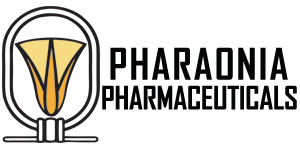

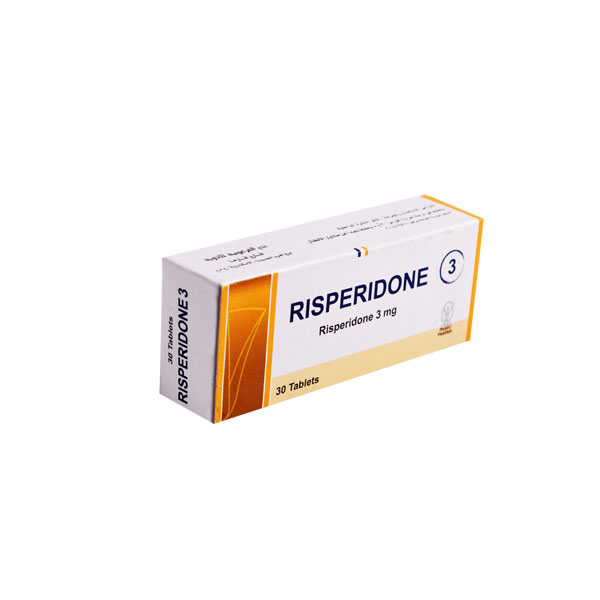
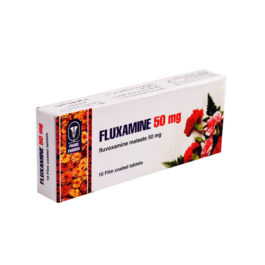
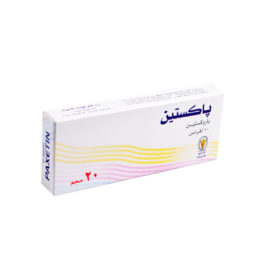
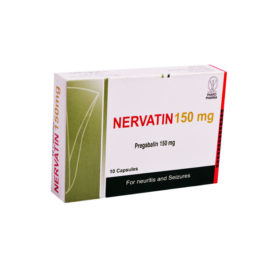
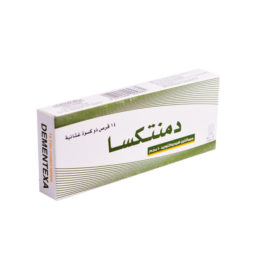
Reviews
There are no reviews yet.